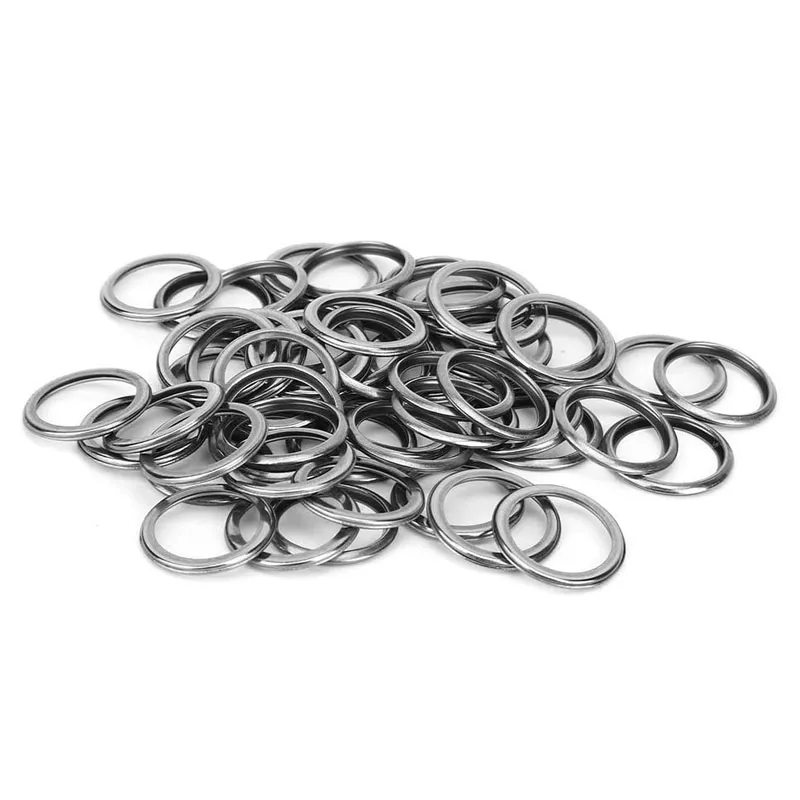steering rack oil seal
Understanding the Importance of Steering Rack Oil Seals
The steering system of a vehicle plays a crucial role in ensuring safe and precise control. Among the many components that contribute to this system’s effectiveness, the steering rack oil seal is often overlooked but is essential for the smooth operation and longevity of the steering mechanism. This article explores the function, types, significance, and maintenance of steering rack oil seals.
What is a Steering Rack Oil Seal?
A steering rack oil seal is a circular rubber or synthetic component positioned at various points on the steering rack. Its primary purpose is to prevent the leakage of hydraulic fluid from the steering system while also acting as a barrier against dirt and contaminants that may contaminate the internal mechanisms. Typically found in vehicles equipped with power steering systems, these seals ensure that the hydraulic pressure necessary for steering assistance is maintained.
The Function of Steering Rack Oil Seals
The primary function of the steering rack oil seal is dual-fold
1. Fluid Retention The steering system often relies on hydraulic fluid to assist the driver in steering. The oil seal prevents this fluid from leaking out of the steering rack, which is crucial for maintaining the necessary pressure and functionality of the power steering system.
2. Contaminant Protection Dirt, dust, and other debris can quickly cause wear and tear within the steering rack if they penetrate the system. Oil seals effectively block these contaminants from entering, preserving the integrity and performance of the steering components.
Types of Steering Rack Oil Seals
Steering rack oil seals come in various types and designs, including
1. Single Lip Seals These seals have a single sealing lip and are suitable for applications where there is moderate exposure to contaminants and fluids. They are the most common type found in steering racks.
2. Double Lip Seals Featuring two sealing lips, these seals provide enhanced protection against fluid leakage and external debris. They are often used in high-performance applications where pressure and contaminants are more significant concerns.
3. Spring-Loaded Seals These seals contain a spring mechanism that applies constant pressure against the sealing surface, ensuring a tighter seal and minimizing the potential for leaks.
steering rack oil seal

Importance of Steering Rack Oil Seals
The importance of steering rack oil seals cannot be overstated. A malfunctioning oil seal can result in fluid leakage, leading to several mechanical and safety issues, including
- Loss of Power Steering Assistance Without sufficient hydraulic fluid, the driver may find it increasingly difficult to maneuver the vehicle, particularly at low speeds or during parking.
- Contaminated Steering Rack If dirt and debris enter the steering system, it can lead to excessive wear on essential components, resulting in costly repairs.
- Increased Wear and Tear A damaged or worn oil seal can lead to fluid leaks, which not only can deteriorate the seal further but can also affect other parts of the steering system and lead to premature failure.
Maintenance and Care
To ensure the longevity and efficiency of a steering rack oil seal, regular maintenance is essential. Here are some tips for vehicle owners
1. Routine Inspections During regular vehicle inspections, pay attention to any signs of fluid leaks or cracking around the steering components. Early detection can prevent costly repairs down the line.
2. Fluid Levels Regularly check the power steering fluid level and maintain it to the manufacturer’s recommended levels. Low fluid can indicate a leak and should be addressed immediately.
3. Professional Assistance If you suspect that the steering rack oil seal is damaged or worn, consult a professional mechanic immediately to avoid further damage to the steering system.
Conclusion
In conclusion, steering rack oil seals are vital components of any vehicle’s steering system, ensuring efficient functionality and protection against leaks and contaminants. Understanding their importance and keeping them in good condition through regular maintenance can significantly enhance the safety and performance of your vehicle. Regular inspections and prompt attention to any signs of wear or damage will go a long way in ensuring that your vehicle remains reliable on the road.
-
Understanding Automotive Oil Seals: Essential Components for Engine and Shaft Protection
News Jul.30,2025
-
The Importance of Heavy Duty Seals in Industrial and Residential Applications
News Jul.30,2025
-
Exploring Industrial Oil Seals: From Felt Oil Seals to TTO and CFW Solutions
News Jul.30,2025
-
Essential Guide to Oil Seals: From Radial to Metal-Cased Seals for Industrial Reliability
News Jul.30,2025
-
Choosing the Right Oil Seals and Gaskets for Industrial and Automotive Applications
News Jul.30,2025
-
Cassette Seals: Durable Sealing Solutions for Harsh Environments
News Jul.30,2025
-
Understanding the Front Main Engine Seal: Purpose, Maintenance, and Installation
News Jul.29,2025
Products categories















